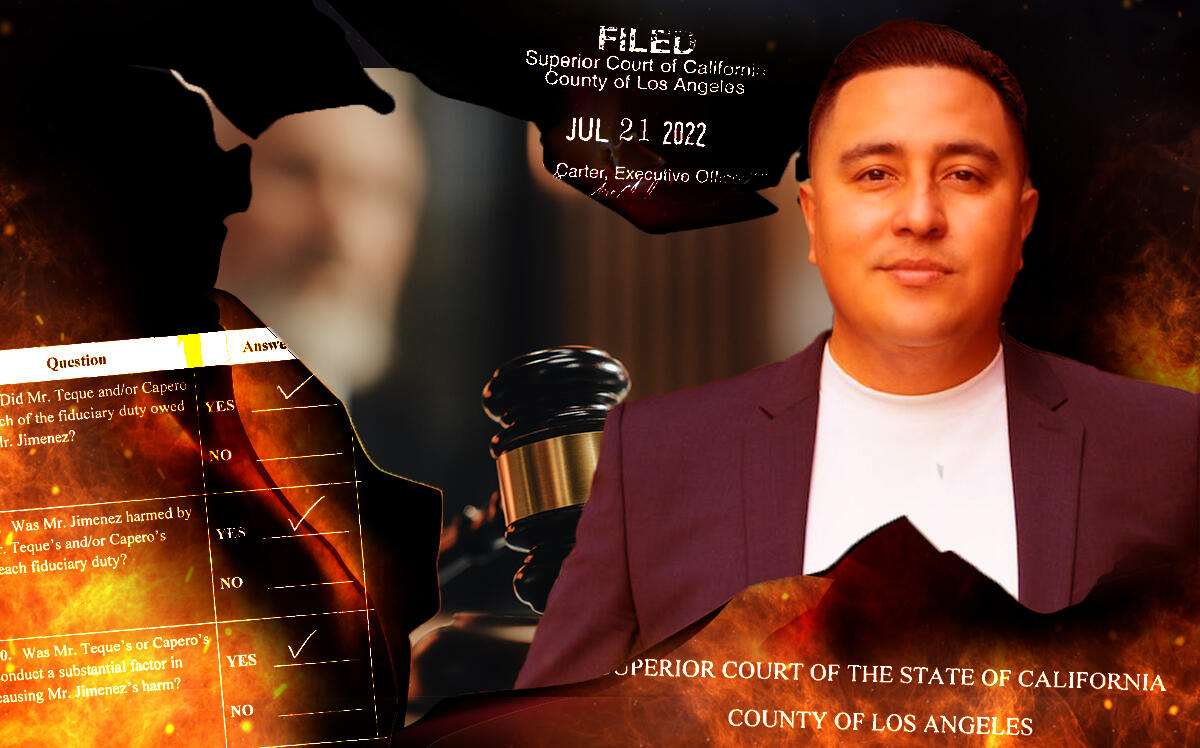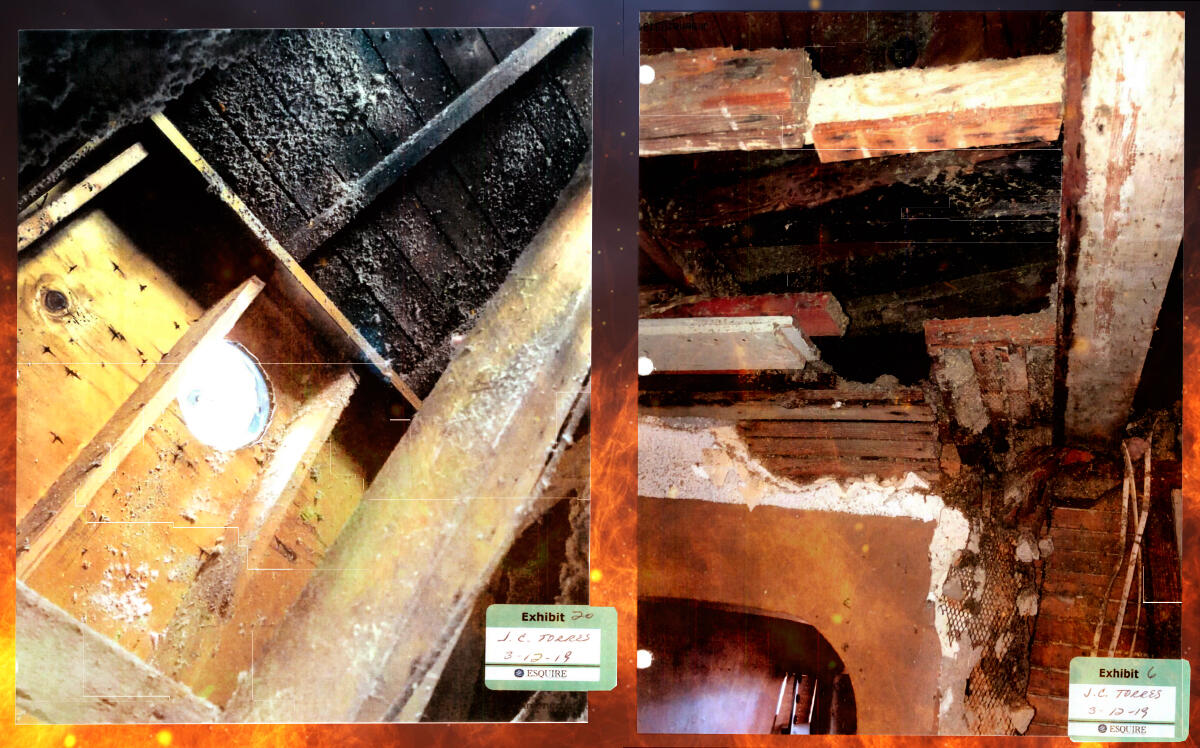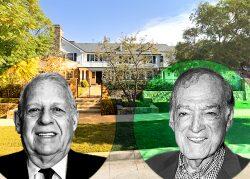 Former LA Building Dept. official alleges he was fired for reporting fraud
Former LA Building Dept. official alleges he was fired for reporting fraud
Trending
“Egregious”: Residential broker found guilty of fraud
Jury’s punitive award exceeds value of house in Lynwood sale

The buying agent’s fraud was so bad, the jury determined, that they awarded punitive damages of $500,000 — a sum significantly greater than the price his client paid for the house.
“It was egregious, if I could use one word,” said Abraham Sandoval, the real estate attorney who brought the case and a licensed broker. “Especially when they’re supposed to represent the buyer as his fiduciary — you just don’t do that.”
In late July, an L.A. County jury agreed, finding the broker, Louis Teque, and Teque’s brokerage, Realty World Capero, liable for 10 different claims, including breach of fiduciary duty, breach of contract and fraud by intentional misrepresentation. In addition to the half-million punitive award — to be borne evenly between Teque and Realty World — the jury also awarded more than $100,000 in compensatory damages.
The defendants, who had already been disciplined by their local realtor association ahead of the trial, could still face further consequences, including a potential license revocation for Teque.

(Superior Court of California, Getty)
While the July special verdict amounted to a condemnation of one broker and his brokerage’s conduct — and a rare example of a brokerage being hit with a major financial penalty for exploiting the typically routine home buying process — the case also served as a broader indictment on nearly everyone involved in the deal. In addition to Teque and Realty World, the suit also named the previous home owners, the selling agent, the selling agent’s brokerage and the appraiser.
All of those defendants ended up settling, through their insurance companies, for a total of around $160,000, Sandoval said.
Teque and Realty World, who are contesting the amount of compensatory damages, did not respond to interview requests. But throughout the proceedings they maintained they did nothing wrong, denying knowledge of the home’s substantial damage and attempting to put the onus on the buyer for waiving voluntary inspections. A lawyer for the broker and brokerage also did not respond.
“I asked the jury to send a message that this is unacceptable,” Sandoval said. “The defense was trying to underplay what happened — ‘Oh this is not a big deal.’ In fact it is a big deal. My client has not been able to live in the house for four and a half years.”
House hunting
The saga dates to early 2018, when a 20-something small business owner named Jose Jimenez was looking for a home for his family.
But Jimenez, who had never bought a home, kept striking out: With Teque — who was also young but already had years of agent experience and had closed more than 100 sales — he had put offers on more than a dozen houses. They were all rejected.
Then Jimenez saw a listing on Redfin that caught his eye: an 1,100 square-foot, three-bedroom ranch-style house with wood floors and a large front yard at 2958 Oakwood Avenue in Lynwood, a working-class city in central L.A. County. The price was $345,000.
Jimenez shared the listing with Teque. The agent pushed his client to make an offer immediately for $380,000. “So u have a better chance of getting it,” he wrote on April 23, in a text exchange reviewed by TRD.
The following day Jimenez agreed to offer $370,000, a bid that his agent pushed him to “please sign ASAP!”
“Are we gonna have a chance to see [the] house,” Jimenez asked soon after.
“Yes,” his agent told him — but only once the offer was accepted.
Jimenez sent a $15,000 deposit, and Teque presented him with the paperwork from the selling agent, which included one red flag that might have been picked up by a veteran homebuyer or lawyer. The sellers had added a Section 1542 waiver, a kind of release form — not typically found in real estate transactions — under which the signer broadly agrees to give up future claims.
The deal closed on April 26, for $370,000, when Jimenez signed the purchase agreement. Yet he also unknowingly signed falsified documents — the evidence that would later become the crux of the fraud case.
Disclosure forms
In their Real Estate Transfer Disclosure Statement, a routine form that accompanies every residential sale, the sellers had noted various issues: The form had check marks noting “significant defects/malfunctions” to the interior walls, exterior walls, windows, driveways and walls/fences. The form also noted that repairs had been done without permits and were not in compliance with building codes.
Another sellers’ form, the Agent Visual Inspection Disclosure (AVID), noted even more problems, including repairs to the entry, living room, kitchen, all three bedrooms and bathroom. Next to a space on the form for the building’s exterior, the selling agent wrote: “needs major repair, roof, walls, dry wall, fence.”
But Jimenez never saw those forms. Instead, Teque presented him with a seller’s transfer disclosure statement that was almost completely blank, showing no problems whatsoever. Teque, as the buying agent, also completed his own AVID form. “Nothing noted,” the agent wrote repeatedly.
The paperwork also included an appraisal, prepared for Jimenez’s lender. It put the home’s value at $370,000, and did not note any illegal modifications or raise any other flags. The appraiser would later testify that he never entered the home’s attic or roof.
‘Charred roof’
Jimenez had been in the home for a few months when he decided to remove the popcorn ceiling. The house started smelling smoky; as the new owner took off more of the particles he discovered that just beyond the plaster was a disaster — “the remnants of a charred roof,” in the words of the complaint. The fire damage extended throughout much of the structure of the house, compromising the rafters, the ceiling joists and the ridge beams. The electrical system was a mess; the roof, even after it had been illegally repaired by the previous owner, still had leaks.
Jimenez called the city, whose inspector red-tagged the property. Instead of a new home for his family, Jimenez had bought an uninhabitable teardown.
“He’s a really nice guy,” Sandoval, the lawyer, said of his client, who can also come across as naive, he added. “I think that was one of the reasons they felt comfortable taking advantage of him.”
The fire that swept through the house was extensive, an expert would testify, but it’s still unclear exactly when it occurred, or exactly who knew about it beyond the previous owner, who testified that he thought he didn’t need permits for roof and other repairs because they were inside the home.
In court Teque, who testified that he had numerous calls with the selling agent about the home’s repairs, tried to blame her for concealing the damage; the buying agent had concocted his own seller’s disclosure form, he argued in court, because he never received the one from the selling agent.
The jury, which saw the two forms side by side on a projector inside the Compton courthouse, didn’t buy it. One member of the jury was a real estate agent.
“You should have gotten rid of me,” she later told the defense.
Read more
 Former LA Building Dept. official alleges he was fired for reporting fraud
Former LA Building Dept. official alleges he was fired for reporting fraud
 Judge finds for Stanley Black on BH mansion fraud claim
Judge finds for Stanley Black on BH mansion fraud claim




